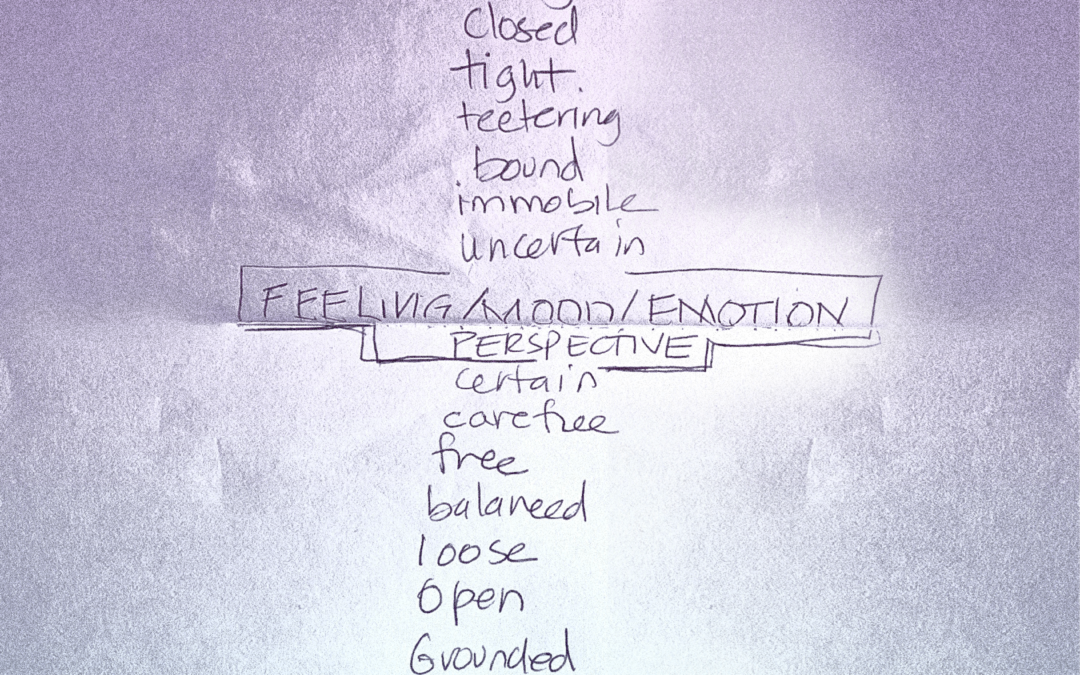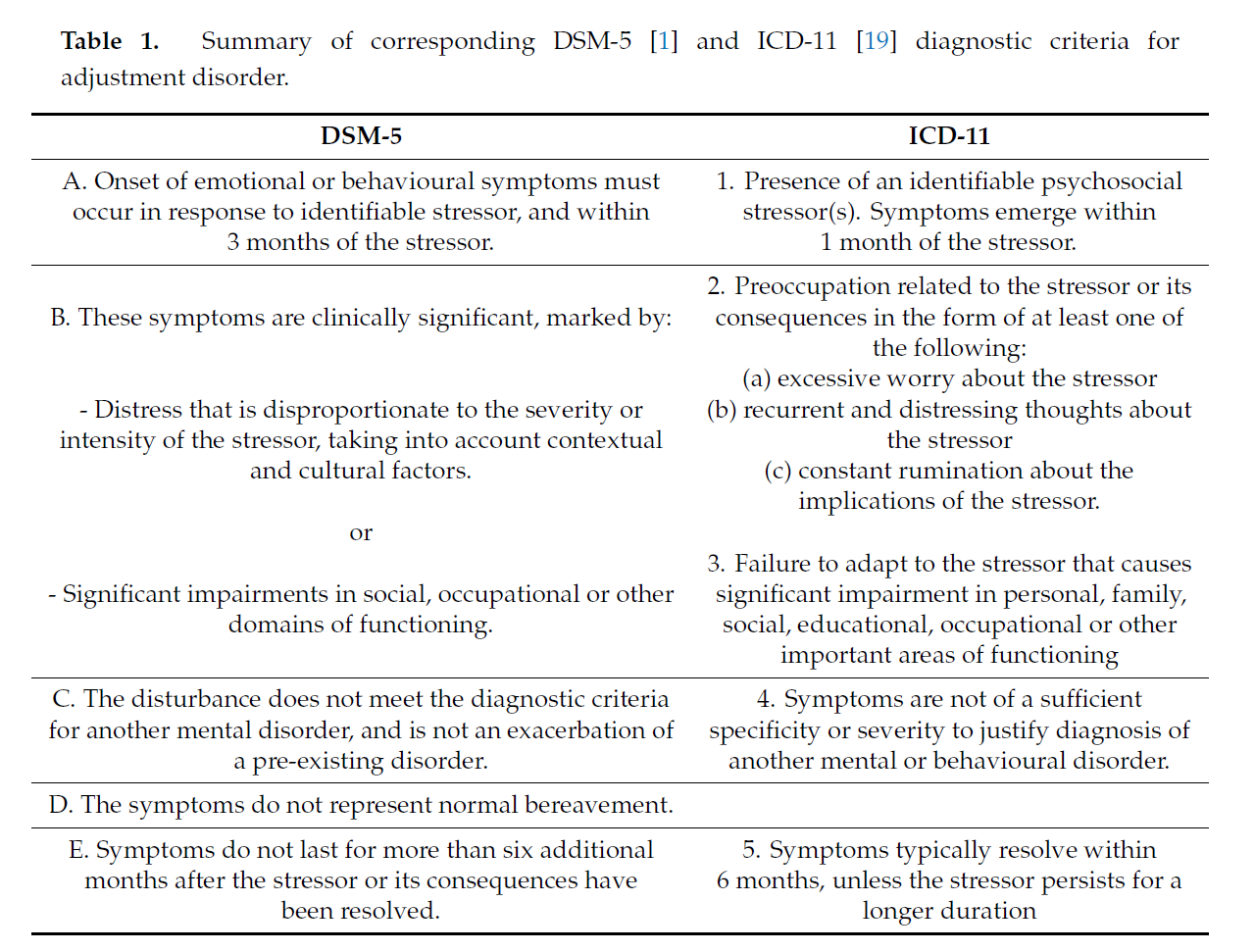Week6
My focus became too narrow on one aspect of my project… I lost track of exploring the paths that led to and lead from my main keyword ‘adjustment disorder’. I dove into secondary research, but I was too narrow in my scope. My keywords searches were too focused on the etiology of adjustment disorder that I lost sight of my actual purpose for this project. The reason I want to research this is to elevate an individual’s mood from negative to the positive. My goal is to create something that could help a person see their world in a new light so they can feel better and make better choices. What my research revealed to me these past two weeks are trifold. It was absolutely necessary in my journey to understand the clinical studies to date that have been published regarding the diagnosis of adjustment disorder and the reasons behind the weaknesses in these studies and why AD may at times have been misdiagnosed.
Only until recently did the International Classification of Diseases (ICD – initiated in Paris 1900) and the Diagnostic and Statistical Manual of Mental Disorders (DSM – published in USA in 1952), used to classify mental disorders[1], revise their classifications to get closer to symptom assessment of Adjustment Disorder: DSM-5 (2013) and ICD-11 (2018) though to date still inadequate.
[1]. Tyrer, Peter. “A Comparison of DSM and ICD Classifications of Mental Disorder.” Advances in Psychiatric Treatment, vol. 20, no. 4, 2014, pp. 280–285., doi:10.1192/apt.bp.113.011296.
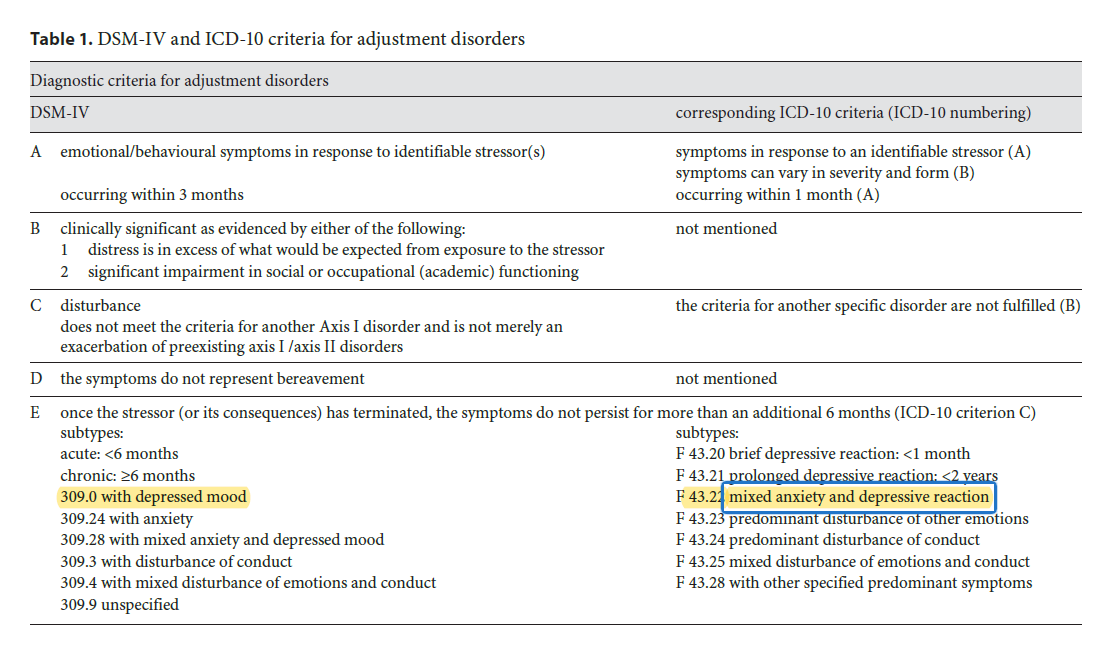
Baumeister H, Maercker A, Casey P: Adjustment Disorder with Depressed Mood. Psychopathology 2009;42:139-147. doi: 10.1159/000207455
Lnyess, jeffrey M. “Unipolar Depression in Adults: Assessment and Diagnosis.” UpToDate, Wolterskluwer.com, 4 Oct. 2021, https://www.uptodate.com/contents/unipolar-depression-in-adults-assessment-and-diagnosis/print#! ——————–>>>>>
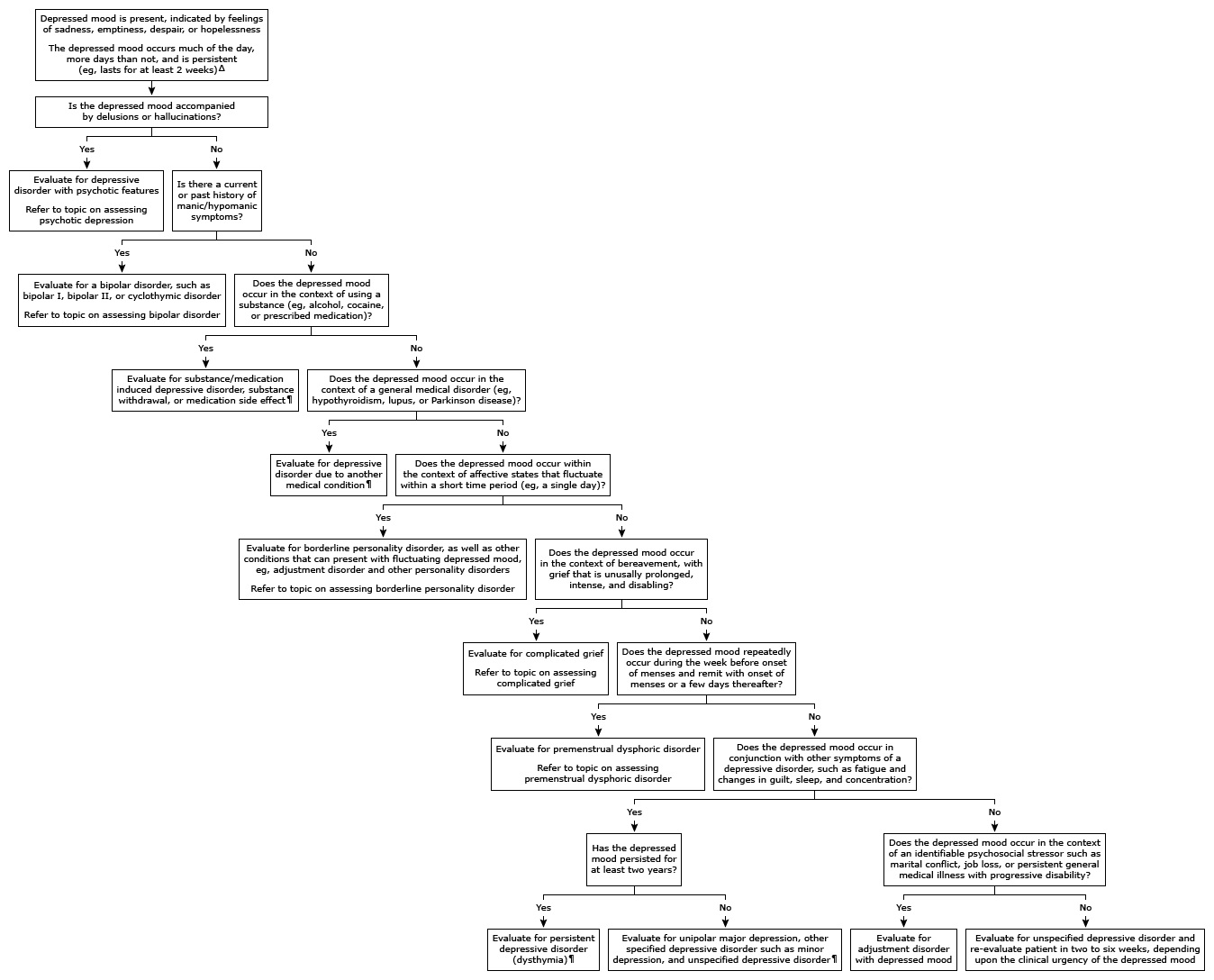
In addition to researching clinical studies, self-reporting questionnaires, former and current clinical diagnostic tools, I looked into a review and a study that concluded 11 research gaps in the study of adjustment disorder. The review “Systematic review and meta-analysis of predictors of adjustment disorders in adults”, and the study “Adjustment Disorders: A Research Gaps Analysis”, 7 of the 11 authors overlapped (Maria A. Morgan , Marija Spanovic Kelber, Erin H. Beech, Abigail L. Garvey Wilson, Bradley E. Belsher, Jean Otto, Nigel E. Bush) working for Psychological Health Center of Excellence, Defense Health Agency, and to my assessment also in case studies they analyzed. The review examined over 70 studies with a total of 3,449,374 participants, while the study identified 254 research need statements using Military Health System (MHS) records, the National Research Action Plan (NRAP) research continuum framework, and stakeholders within Department of Defense. The limitations of the study can be seen in the possible biases related to the authors, stakeholders and source data, but the gaps they found were resounded by other studies I reviewed.
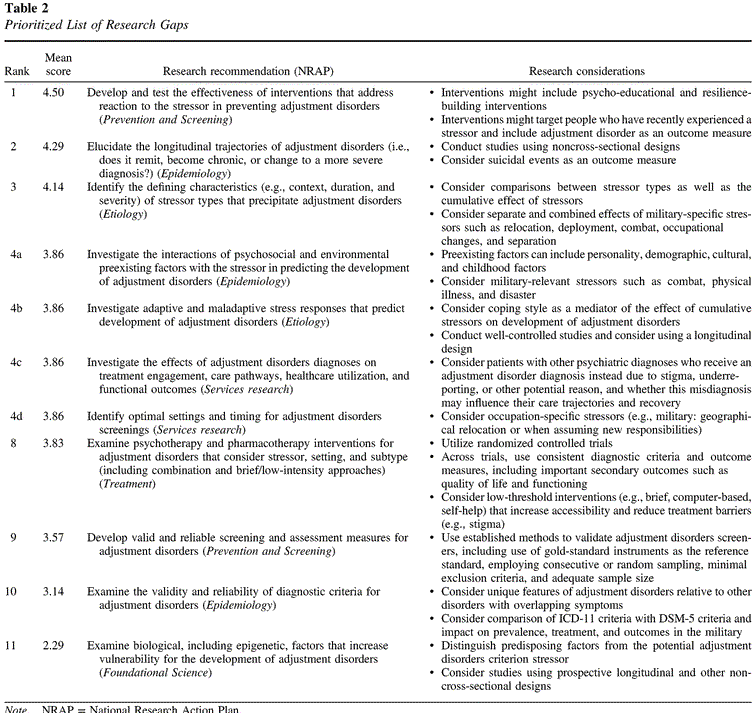
Morgan, Maria A., et al. “Adjustment Disorders: A Research Gaps Analysis.” Psychological Services, 2021, https://doi.org/10.1037/ser0000517.
It’s now time to research not the etiology of adjustment disorder, but the treatments for AD including workshops, counseling, and expanding to digital devices for possible solutions.
What I discovered in my research is that I need a qualified partner or partners to help me in developing this project. There are too many inadequately studied predictors, stressors, and cultural reactions to certain stressors to assess and single out adjustment disorder with depressed mood from other forms of stress related mental health disorders. In addition, there is still a lack of studies differentiating adjustment disorder symptoms from normal reactions to stressors.
- When is it appropriate to define an individual as having AD?
- When is intervention necessary?
- What are the non-psychopharmacology methods?
- What methods are being used now for treatment?
- Which treatment methods have had most success?
- How has wearables helped in treatments?
- How has digital Apps helped in both treatment and discernment of categories for mood disorders?
- Who are the players in this arena?
In order to narrow down the demographics for my argument, I still need to do more research. I know my focus group will be in North America and adults (18 – 65?)… class?, sex?, race?, urban? rural?, level of education?, mobile user?, previously diagnosed mental disorders or not?…
What I do realise is that I would like to use an accessable device, machine learning, interactive UI, touch, movement, audio and visual stimuli.

